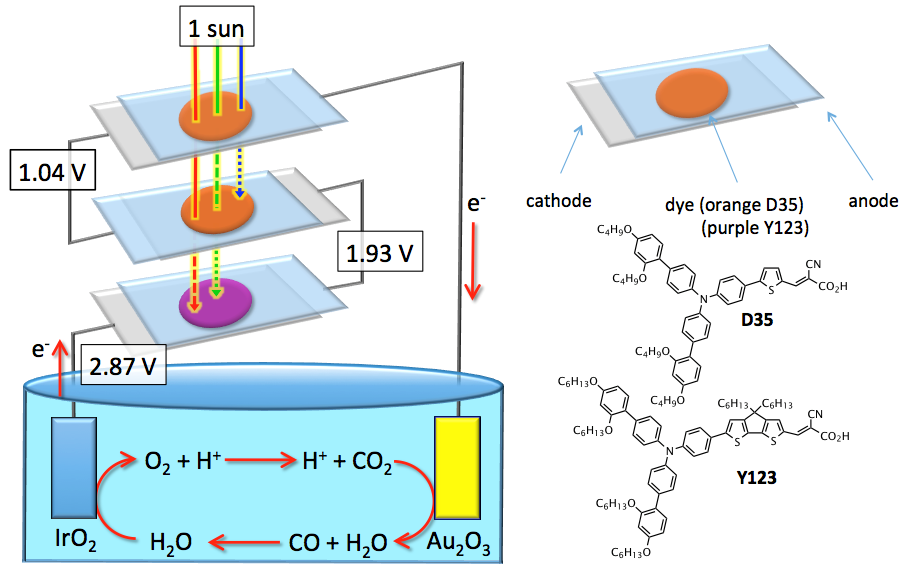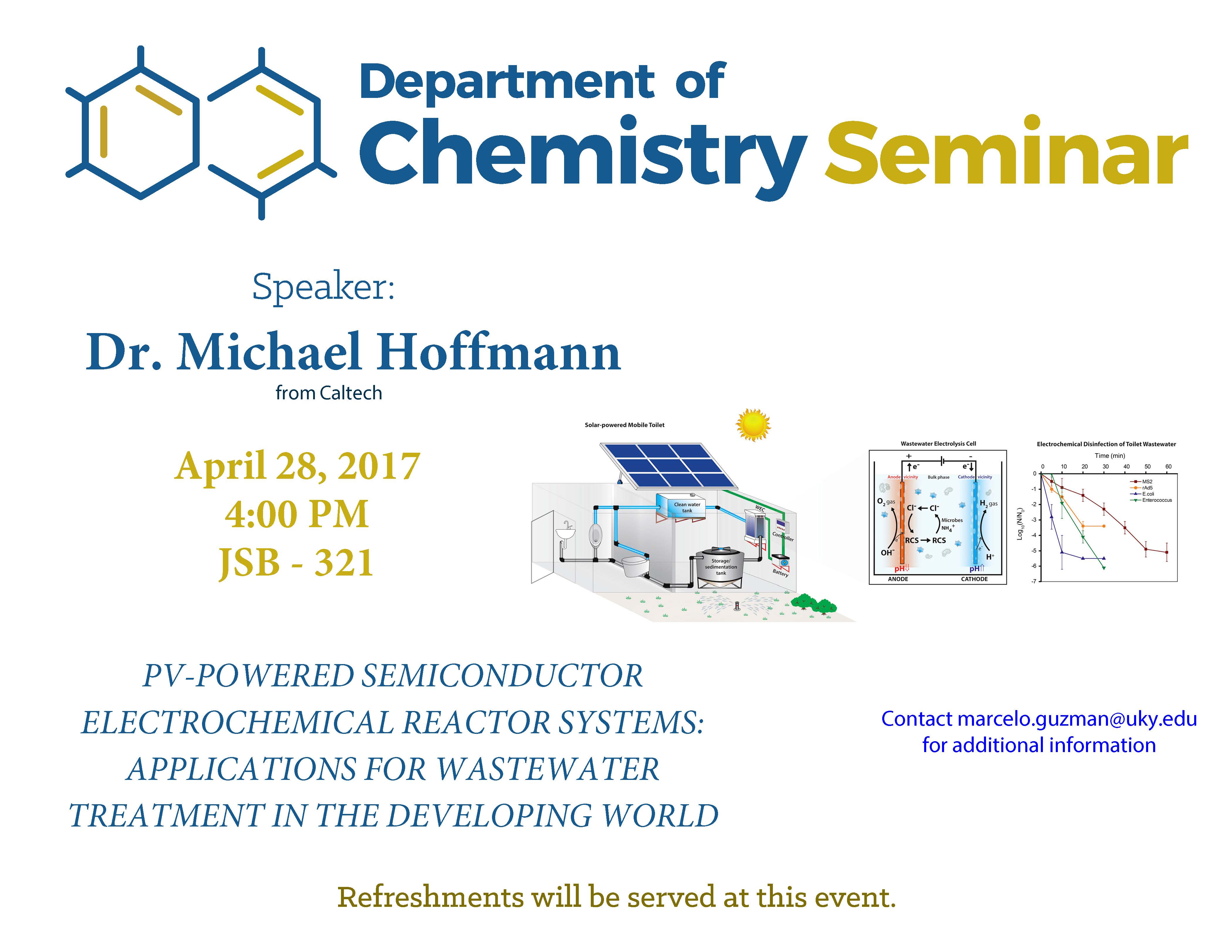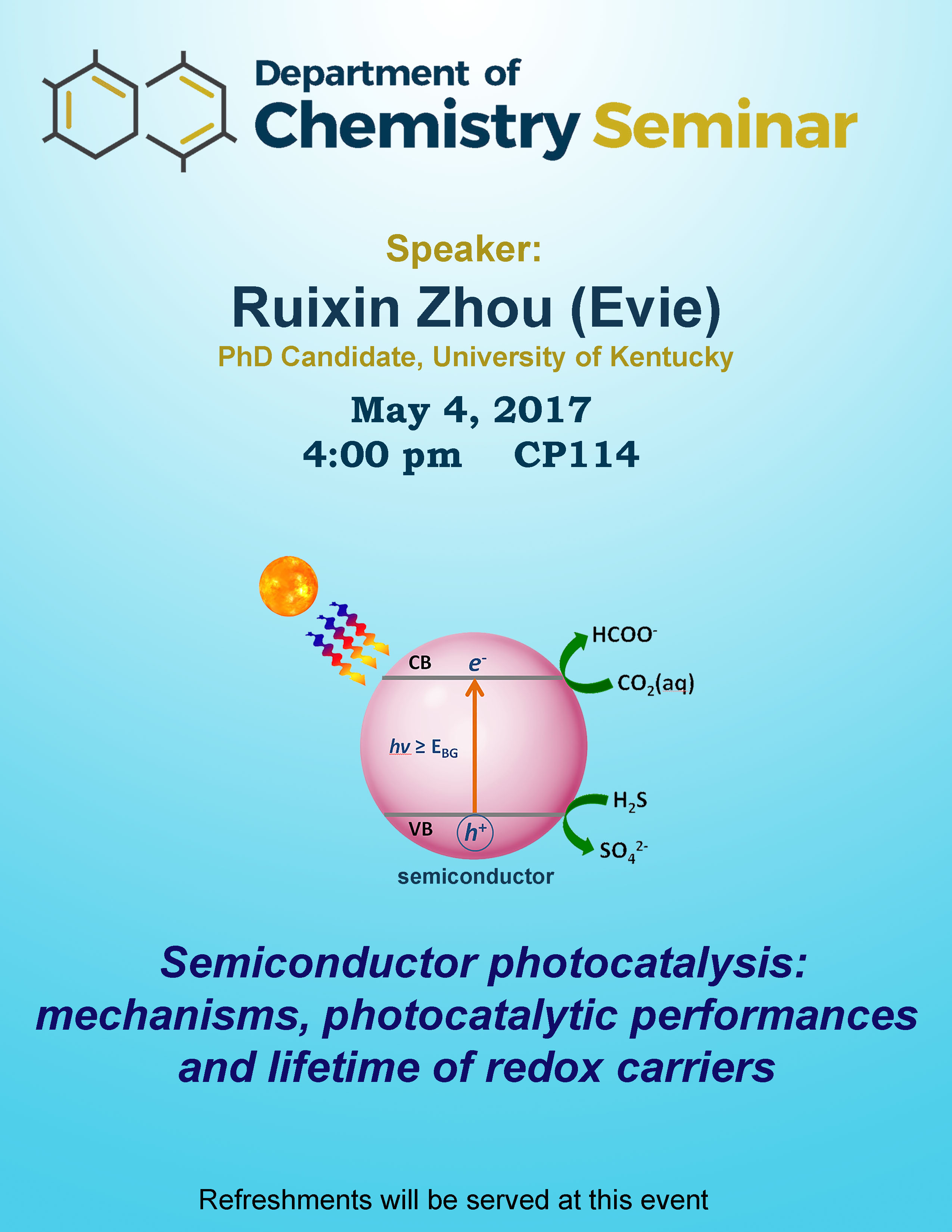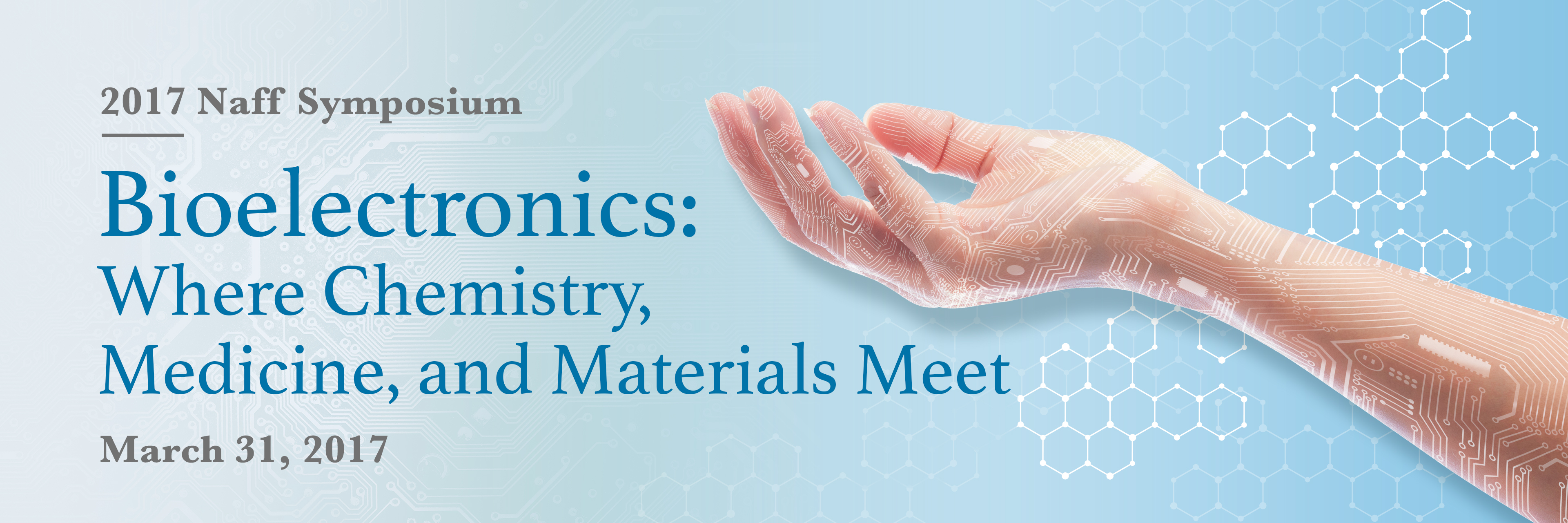Chemistry Department Seminar
Philosophical Issues in Modeling Nanoscale Systems
Combining Plasmonic Particles And Lipids For Biosensing And Spectroscopy
This presentation will highlight two platforms recently developed in the Sagle group which combine lipids and plasmonic nanoparticles. The first platform involves sandwiching a liposome between a planar gold surface and a gold colloid to generate a biocompatible, highly enhancing surface enhanced Raman spectroscopy (SERS) substrate. Our initial characterization of these novel substrates investigates substrate stability, temperature inside the liposome component, SERS activity inside the liposome, SERS mechanism and reproducibility. The substrates are shown to be stable to laser irradiation and exhibit a temperature increase of only 20 degrees Celsius inside the liposome component. The SERS enhancement of dye residing in the liposome component was found to be 8 x 106, higher than expected considering the dye molecules are at least 4 nm from either gold surface. Finite Difference Time Domain (FDTD) calculations reveal that the field enhancements inside the liposome are uniform with the major contributing factor being long range coupling between the gold nanoparticle and the mirror. Lastly, these substrates show greater reproducibility than typical SERS substrates in which dye is sandwiched between two metallic surfaces, and are expected to allow for the non-perturbative measurement of biological molecules in their native state, freely diffusing in solution. The second platform involves interfacing a gold nanodisc array with solid supported lipid bilayers for label-free biosensing of membrane-associated proteins. This platform is shown to have superior sensitivity due to elongated gold nanodics (exhibiting greater sensitivity than typical nanoparticle arrays) and an ultrathin silica layer above the nanodiscs, enabling the lipid bilayer to reside close to the nanoparticle surface. Further studies currently underway are using this platform with silver nanodiscs to carry out label-free SERS measurements of lipid components in the freely diffusing bilayer.
Photonmanagement in NIR and SSM Dye-Sensitized Solar Cells
Abstract: Recently, dye-sensitized solar cells (DSCs) were shown to be the highest power conversion efficiency technology of any solar cell technology when using photons from the beginning of the solar spectrum until 700 nm. Two key directions are apparent in further elevating this technology: (1) broadening the spectral window used, and (2) efficiently subdividing the spectrum further for multijunction devices which can be used in combination with many solar cell technologies. Progress toward designing optimal panchromatic organic sensitizers to use NIR photons based on physical organic concepts such as proaromaticity and cross conjugation will be discussed. Additionally, the design and realization of a series sequential multijunction dye sensitized solar cell (SSM-DSC) system for effective photon management will be discussed. Ongoing research to optimize this system based on transition metal redox shuttle design and high voltage organic dye design will be analyzed. The SSM-DSC system coupled with electrocatalysts as solar-to-fuel systems has been shown to power water splitting and CO2 reduction coupled with water oxidation from a single illuminated area without external bias.

Jared Delcamp
Assistant Professor
University of Mississippi
Department of Chemistry & Biochemistry
Can the biorefinery survive cheap oil? Opportunities for converting lignin to biobased chemicals.
PV-Powered Semiconductor electrochemical reactor systems: applications for wastewater treatment in the developing world
PV-Powered Semiconductor electrochemical reactor systems: applications for wastewater treatment in the developing world
Michael R. Hoffmann
California Institute of Technology, Engineering & Applied Science, Linde-Robinson Labs, Pasadena, California 91125
The Hoffmann Group has developed, tested, and implemented transportable reactor systems that have been designed for the onsite treatment and disinfection of domestic wastewater. After pre-treatment with a sequential anaerobic/aerobic baffled bioreactor, the effluent is processed sequentially through semiconductor electrochemical arrays where the chemical oxygen demand and microbial loads are reduced to below international reuse standards. Special mini-reactors are used to convert grey water for reuse as handwashing water. The treated black water is recycled into flush water reservoirs without discharge to the surrounding environment. Human wastewater can be clarified with the elimination of suspended particles along with >95% reduction in the chemical oxygen demand and a total elimination of fecal coliforms, E. coli, viruses, and total coliforms. Enteric organism disinfection is achieved for bacteria and viruses via anodic reactive chlorine generation from in situ chloride oxidation coupled with cathodic reduction of water to form molecular hydrogen. Improvement of the performance and durability of the core semiconductor anodes along with materials modifications to lower their production costs are ongoing. Third and fourth-generation prototypes are undergoing field-testing in locations that lack conventional urban infrastructure for wastewater discharge and treatment. The packaged treatment systems can operate without an external source of electricity or fresh water. Manufacturing and field-testing is underway in China and India. Two Caltech-China joint-venture companies, Eco-San and Entrustech, have been established in Yixing, China to manufacture solar-powered units for the developing world and electrochemical reactor systems for commercial use. Additional industrial collaborations have been established in India with ERAM Scientific and with the Kohler Company (USA/India) for production of units to be used in urban and peri-urban environments in India. Larger-scale units have been built for use in South Africa and Southern China.

UK College of Design - multiple titles
Rebekah Ison, Anne Filson, Gary Rohrbacher from UK's College of Design will be presenting this week's seminar.
“Pragmatism and Imagination: Designing a Carbon Refinery”
Anne Filson
This talk will showcase several student algae projects developed in undergraduate architecture studios, using them to explain the potential of cross-disciplinary academic collaborations.
“The Problem is the Solution”
Gary Rohrbacher
This talk will describe the work of the Atomic Cities Research Group in several design research studios conducted between 2010 and 2016. The studios propose hopeful futures for the Paducah Gaseous Diffusion Plant site, and the City of Paducah in Western Kentucky.
"From SEE(E)D to (S)STEM"
Rebekah Ison
This is a project exploring collaboration among scientists, engineers, entrepreneurs, educators and designers to develop didactic tools to promote sustainability, science, technology, engineering and mathematics.
Refreshments will be served at this event.
Polycyclic Alkaloid Natural Products of Fungal Origin

Exit Seminar
----------
Semiconductor photocatalysis: mechanisms, photocatalytic performances and lifetime of redox carriers
Faculty Advisor: Dr. Marcelo Guzman

Naff Symposium

Schedule of Events - March 31, 2017 |
|
|---|---|
| 8:00 a.m. |
Registration & Continental Breakfast Gallery, W.T. Young Library |
| 8:50 a.m. | Welcome |
| 9:00 a.m. |
John A. Rogers, PhD Materials for Biodegradable Electronics Auditorium, W.T. Young Library |
| 10:00 a.m. | Break (refreshments available) |
| 10:30 a.m. |
Zhenan Bao, PhD Skin-Inspired Organic Electronic Materials and Devices Auditorium, W.T. Young Library |
| 11:30 a.m. | Lunch & Break |
| 1:00 p.m. |
George Malliaras, PhD Interfacing with the Brain using Organic Electronics Auditorium, W.T. Young Library |
| 2:00 - 2:30 p.m. | Coffee Break & Poster Session Set-up |
| 2:30 - 3:15 p.m. |
Alon Gorodetsky PhD, Naff Young Investigator |
| 3:15 - 4:30 p.m. |
Poster Session Jacobs Science Building |
For additional information, click here.
